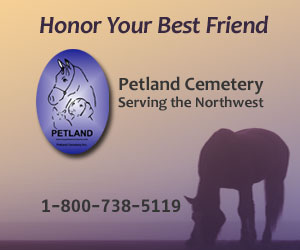by Darleen Finnigan
To become a “balanced rider,” you must be able to saddle your horse in a balanced manner. Because you are a beginner, we will start with saddling Western. All principles of balanced riding should be applied to English saddling.
Your horse is well groomed (last month’s article). You are ready to get that saddle on so you can ride. The best-groomed horse retains some dust and grime in his coat, so unless you are set up to wash off your saddle pad often, sometimes after each ride, it is best to start with your Navajo blanket next to the horse. (Wool is absolutely the best for moisture absorption as well as molding to the horse’s shape!) Years of working with Navajo’s have taught me to place the blanket folded on the horse with the fold falling lengthwise of the horse’s body. This allows the weave of the blanket to conform to the horse’s back, and the more sway back the horse, the more necessary this is to prevent wrinkles forming under your pad. The front edge of the Navajo on most medium length horses should come to above the middle of his shoulder, which would place it slightly over the withers. Longer backed horses need it placed an inch or so further back. Hopefully shorter backed horses will have a shorter pad so the blanket can start at the same place. Once you get the blanket evenly positioned, front to back, as well as even on both sides of the horse, slide it back a 1 /2 inch to lay all the hair down in place.
Next comes the pad. Buy the very best pad you can afford. For the sake of the horse’s back, we use a high impact foam core pad that has built up wither shaping. Place the pad so the front is right on top of the Navajo. It is not important if the Navajo does not extend as long in back as the pad, the sweaty part of the horse is covered, and that is what the blanket is for. Wash your blankets whenever they become soiled and sweaty.
Now, place the saddle so that the skirt of the saddle is 1 inch or more behind the front edge of the pad. This is very important to keep the saddle from sliding off the pad forward when you are going down a steep hill! Once you get the saddle positioned, lift the whither part of the blanket and pad up into the gullet of the saddle, to take pressure off the horse. Check that there is a space equal to two or three fingers between the withers of the horse, and the underside of the gullet of the saddle. If you cannot get your fingers under the saddle at this point after you are sitting on the saddle, you will injure your horse’s withers from the saddle rubbing and pressure. Then check the saddle skirts to see that they are lying flat along the shoulders of the horse. Those are the two basic fitting locations of a saddle. Poor fit in either place will cause the horse injury and misbehavior due to pain!
If everything fits, pull your cinch under the horse’s belly, and make your latigo knot, fairly loose to begin with, then snug it up before you mount. The cinch is not what holds the saddle on, your balanced riding does. Do not make your cinch too tight, as this will cause severe injury to the horse’s rib cage. You should be able to comfortably get two fingers between the horse and cinch. We have found neoprene cinches when done right, will never cause saddle galls.
Next month we will explore safer leading and mounting your horse.
Darleen Finnigan was a CHA & ARIA Certified Instructor (Retired)
Published in the May 2003 Issue

The Northwest Horse Source is an independently owned and operated print and online magazine for horse owners and enthusiasts of all breeds and disciplines in the Pacific Northwest. Our contemporary editorial columns are predominantly written by experts in the region, covering the care, training, keeping and enjoyment of horses, with an eye to the specific concerns in our region.





